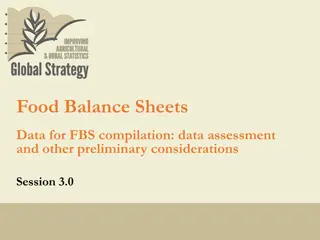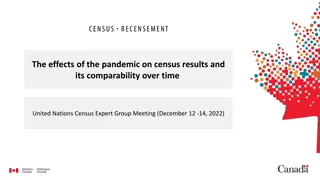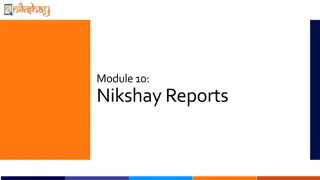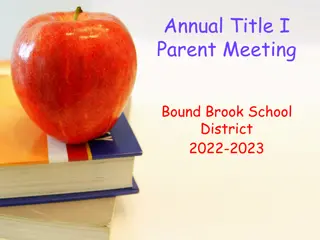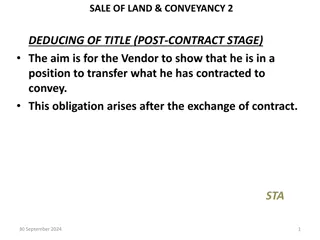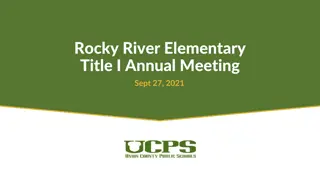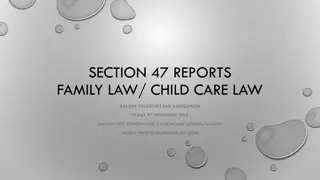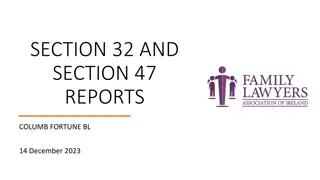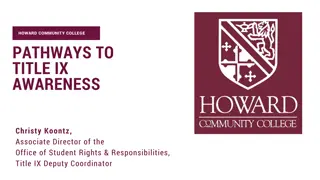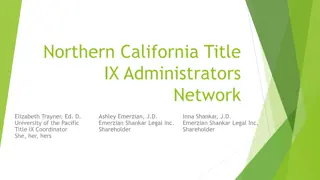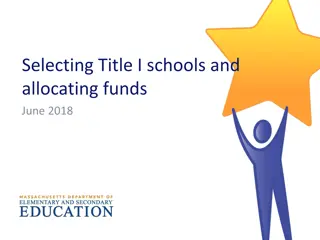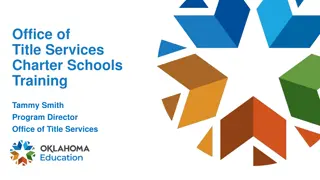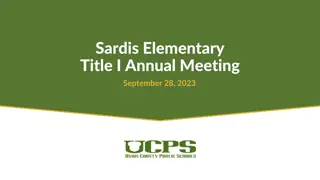Understanding Title I-A Comparability Reports
Title I-A Comparability Reports ensure that Local Education Agencies (LEAs) receiving funds provide services comparable to those in non-Title I schools. LEAs must meet specific requirements and complete annual reports to compare student/staff ratios. All public school districts accepting Title I-A funds are subject to these regulations, with exceptions for certain situations. The comparison includes all district schools based on grade spans, student/teacher ratios, and expenditures. Student inclusion criteria are also outlined in the reporting process.
Download Presentation

Please find below an Image/Link to download the presentation.
The content on the website is provided AS IS for your information and personal use only. It may not be sold, licensed, or shared on other websites without obtaining consent from the author. Download presentation by click this link. If you encounter any issues during the download, it is possible that the publisher has removed the file from their server.
E N D
Presentation Transcript
Purpose A Local Education Agency (LEA) may receive funds under Title I, Part A and Title I, Part C if: State and local funds will be used in participating schools to provide services that, taken as a whole, are at least comparable to services that the LEA is providing in schools not receiving Title I, Part A or Title I, Part C funds.
Meeting the Requirement An LEA is considered to have met the statutory comparability requirements if it has implemented (1) an LEA wide salary schedule; (2) a policy to ensure equivalence among schools in teachers, administrators, and other staff; and (3) a policy to ensure equivalence among schools in the provision of curriculum materials and instructional supplies.
Meeting the Requirement The Oregon Department of Education (ODE) has developed a standard for comparing student/ instructional staff ratios. School systems must complete an annual comparability status report that compares the average number of students per instructional staff in each Title I-A school with the average number of students per instructional staff in schools not participating in Title I-A.
Which Districts? This requirement applies to all public school districts that accept Title I-A funds with the exception of any LEA that does not have more than one building per grade span. In addition, if a district has a school with fewer than 100 students enrolled the school does not need to be included in the comparability calculations.
Which Schools? All district schools (including public charter schools) are part of the calculation. The comparison is made between like grade spans, i.e. elementary-to-elementary, middle-to-middle, high-to-high school. Student/teacher ratios and/or expenditures are calculated between Title I-A schools and non- Title I-A schools.
Which Students? All students enrolled in Title I-A and the non-Title I-A schools must be included in the Report. Kindergarten students are included and their count is determined by whether or not they attend full or half-day sessions.
Which staff? Calculate the Full Time Equivalent (FTE) numbers of certified and non-certified instructional staff who are paid with State and local funds that are regularly assigned to each school listed. Staff members whose full salaries are paid with federal dollars are not to be included in this report.
Which staff? When comparing student/instructional staff ratios, the LEA must consistently include the same staff members in the ratios for both Title I-A schools and the comparison non- Title I-A schools. Instructional staff is defined as anyone who provides direct instruction to children or who assists or supervises those staff members who provide instruction.
Meeting the Requirement A Title I-A school is comparable if the school s average student/teacher ratio does not exceed 110 percent of the average student/teacher ratio of schools not participating in Title I-A. For example, if the average ratio of students to instructional staff is 20 to 1 for an LEA s non- Title I-A schools, the ratio at each Title I-A school can be no higher than 22 to 1.
When? All Title I-A funded schools in an LEA should meet the Title I-A equivalence staffing requirement by December 1 of each school year. Per statute, any Title I-A school not in compliance with this comparability requirement is subject to suspension and withholding of Title I-A funds.
Next steps: In order to meet the annual target date of December 1, an LEA should collect the comparability report information by October 1 of each school year. This will allow the LEA sufficient time for allocation, placement, and/or realignment of staffing in Title I-A schools prior to December 1st.
Contact at ODE Please contact Lisa Plumb if you have any questions regarding the Title I-A Comparability Report: Lisa.plumb@state.or.us 503-947-5749 Thank you!



